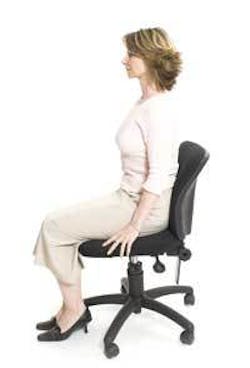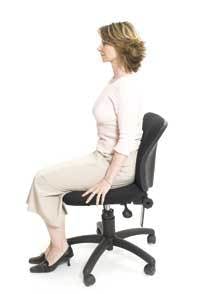Managing Your Stress at Work
Managing stress at work involves mental stress and stress on our bodies. We often fail to notice poor posture or extra wear we put on ourselves until we feel stiff, sore, or outright pain. Three steps can decrease the stress our bodies endure at work. These can apply to any job you do.
Step 1: Watch your posture
The better your posture is, the less strain there is on your muscles - although it might not feel that way because many of us have become accustomed to poor posture. When we do sit or stand up straight, it feels hard to do. Poor posture is a habit you can break. Perfect posture is one in which your ears are aligned with your shoulders and hips. Few of us have posture this good, but we can come close. The biggest fault most people have is forward head posture, or FHP. This is where the head juts away from the body. Try to pull your head straight back to realign your ears over your shoulders. Another common postural misalignment is rounded shoulders. The shoulders curve forward, and this can accentuate the curve in the upper back. Squeeze your shoulder blades together and down. This strengthens upper back muscles and keeps you in a better posture. Now, think about your hips and knees when you’re sitting. If you sit in a chair, your feet should touch the ground and your hips and knees should be at 90-degree angles.
Step 2: Use the right equipment
There are things that can help make watching your posture easier - for one, your chair. You need one that fits your body. When you sit, your feet should touch the ground when your buttocks is all the way to the back of the chair. Your hips and knees should also be at that 90-degree angle. To help get you sitting in a correct, upright posture, you might want to use a lumbar roll. These cushions come in various sizes and shapes, but sit at your beltline to help maintain the proper curve of your lower spine. If you work at a computer, make sure the monitor is at eye level so you don’t have to excessively look up or down.
Step 3: Take micro-breaks
Another way to manage the stress you put on your body is to take breaks. They don’t have to be long breaks, but micro-breaks to get you out of your poor posture. We don’t realize when we slouch in our chairs, strain our necks to see computer screens, or lean over patients. Take a small break every 15 to 30 minutes to sit or stand up straight and stretch in the direction opposite of which you’ve just been working, then resume your activity. This will help prevent pain and stiffness you might feel now after a long day.
If you’ve tried these steps and still feel pain and stiffness, consult with your physician because you might be a candidate for physical therapy. You might need a more specialized set of exercises or hands-on techniques to help reduce your impairments and restore your function so you can get through life without pain.
Karen Groulx, PT, DPT
Groulx earned a doctorate of physical therapy degree from Temple University in Philadelphia. She has been working in the outpatient orthopedic clinical setting for the past six years. You may reach her at [email protected].



